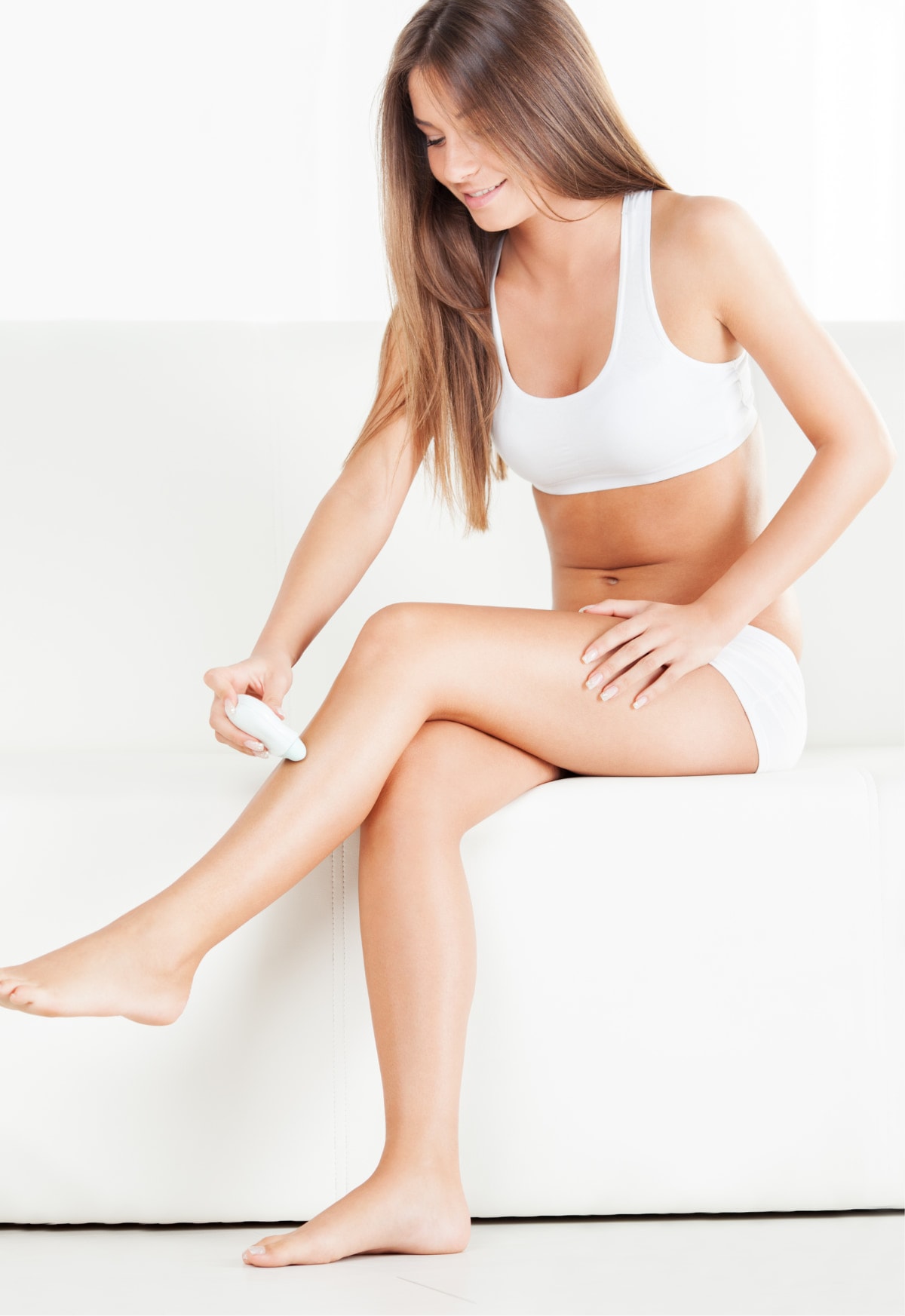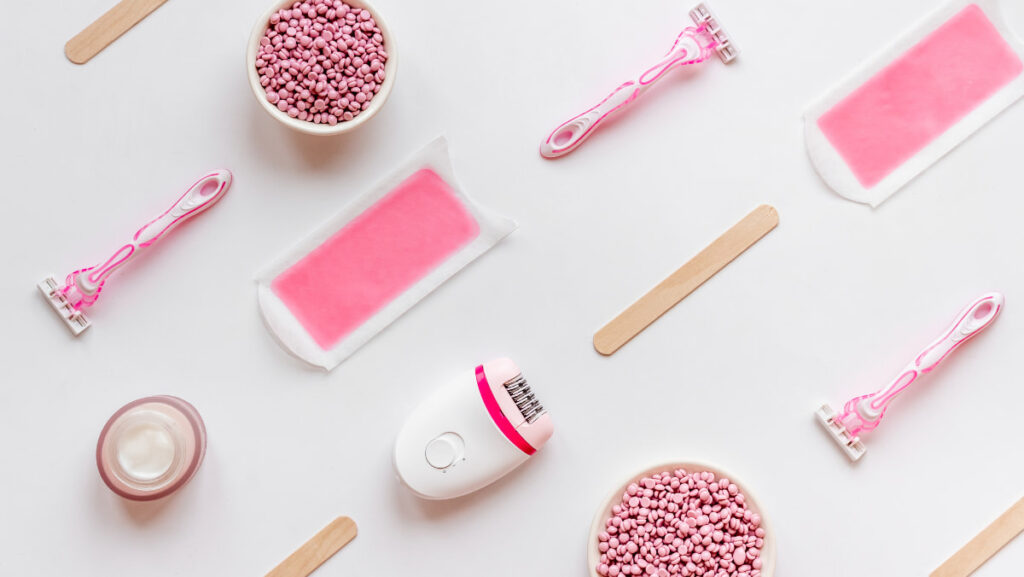
So, you’re interested to know what epilation is. Perhaps you’re tired of the endless cycle of shaving or waxing, or maybe you’re just curious about alternatives to traditional hair removal methods. Either way, you’ve come to the right place.
Epilation is a popular method for hair removal that provides long-lasting results. It’s a process that involves removing hair from the root, which means it takes longer for new hairs to grow back compared to shaving or depilatory creams.
In this article, we’ll answer the question “What is epilation?” and share what it’s all about, how it works, its benefits and drawbacks, and some tips if you decide to give it a try. Buckle up – your journey towards smoother skin starts here!
What Is Epilation: Choose The Best Option For You
Ever wondered what epilation is? You’re not alone. It’s a term that often gets thrown around in beauty circles, but many people aren’t exactly sure what it means.
In its most basic form, epilation is a method of hair removal that removes hair from the root. Unlike shaving or trimming, which just removes the visible area of your hair, epilating removes the unsightly roots as well.
Epilators are little handheld devices that use microscopic tweezers to grip and pull your hair out. They may appear frightening at first, and you may think, “Ouch!” They can, however, be really successful at keeping your skin smooth for weeks once you get acclimated to them.
It’s worth noting that while all methods of hair removal come with their own pros and cons, there are some key benefits unique to epilation:
- Long-lasting results: Because it removes hairs from the root, results can last up to 4 weeks.
- Smooth skin: Your skin may feel smoother after epilating because no stubble is left behind.
- No chemicals: Unlike depilatory creams or waxing products, there are no harsh chemicals involved in epilation.
Now let’s talk about pain – yes, there’s no sugarcoating it – epilation can hurt, especially if you’re new to it.
But here’s a comforting fact – most users report that discomfort decreases significantly after repeated use as the body becomes accustomed to the process.
Remember though! Everyone’s experience will vary depending on factors like pain tolerance and hair thickness.
So don’t fret if your initial experiences don’t match up exactly with these descriptions; just keep experimenting until you find what works best for you.

Facial Hair And Body Hair: How Does Epilation Work?
When you’re in the quest for smooth, hair-free skin, epilation is a term you’ll frequently come across. But what exactly does it involve? Here’s a brief insight into how epilation works.
Epilation is fundamentally about eliminating hair from the root. While shaving only removes the top layer of hair, epilators go deeper. They remove hairs from the roots, resulting in longer-lasting results and smoother skin.
Epilators are handheld devices that include tiny tweezers that grab hairs and pull them out as you glide them over your skin.
The sensation is similar to numerous fast-paced plucking – it may appear intimidating at first, but remember that beauty often comes with a bit of agony!
Now, if you’re wondering why go through all this trouble when waxing offers similar results, here’s why:
- Less Messy: Unlike waxing, which leaves behind sticky residues or creams that get everywhere, epilating is a cleaner process.
- Cost-Effective: An epilator is a one-time investment compared to regular purchases of wax strips or salon visits.
- Convenient: You can use an epilator at any time in the comfort of your own home.
The effects of an effective session can last up to four weeks! It’s also worth noting that frequent sessions will cause your hair to grow back thinner each time – so there’s some long-term gain too.
However, epilation isn’t for everyone. If you have very sensitive skin or low pain tolerance, other methods like laser treatment could be more suitable for your needs.
Also, note while using an Epilator may initially sting (like quick pinpricks); this discomfort decreases over time as your skin adjusts and becomes used to the process.
Benefits Of Using An Epilator Over Other Types Of Hair Removal Methods
You’re probably wondering, “What makes epilation a better choice over other hair removal methods?” Well, let’s delve into the specifics.
Firstly, epilation provides long-lasting results. Unlike shaving or depilatory creams, which merely cut or dissolve the hair at the skin’s surface, an epilator removes the entire hair from its root. This means you’ll enjoy smooth skin for up to four weeks.
Second, it is long-term and cost-effective. Sure, your initial expenditure may be larger than that of a razor or wax strip, but consider this: once you’ve purchased your epilator, that’s it! You don’t have to keep buying replacement blades or wax.
Third, epilation might result in less apparent regrowth. Pulling hair from the root repeatedly leads some follicles to cease generating new hairs entirely.
As a result, you may notice that you have fewer and finer hairs over time, making your grooming regimen even easier!
Finally, and most crucially, there is no need for appointments! You can use an epilator whenever it is convenient for you, such as when watching TV on a Sunday afternoon or taking a short shower before going to work.
Here’s a comparison table of different methods:
| Method | Duration | Cost | Regrowth |
| Shaving | 1-3 days | $$/month (blades) | Fast & visible |
| Waxing | 2-6 weeks | $/$$ per appointment | Slow & less visible |
| Epilation | (Up to) 4 weeks | $ (once-off purchase) Slow & least visible |
- $$ = moderate expense
- $ = low expense
Different Types Of Epilators Available
As you delve into the world of epilation, you’ll come across a variety of epilator types. Each has its unique features and benefits that cater to different hair removal needs.
Spring-type epilators were the first on the market. These devices use a coil spring that bends into a curve as it rolls across your skin. As it moves, one side tightens while the other loosens, catching hairs and pulling them out at the root.
However, spring-type models have largely been replaced by disc-type epilators. They work similarly to their predecessors but use rotating discs instead of springs. This design change made these devices more durable and efficient.
The evolution didn’t stop there, though – now we have tweezer-type epilators, which are currently the most popular in the market.
Instead of complete discs or springs, they feature plates (resembling tweezers) that open and close as they spin around an axis to remove hair from your skin.
For those who prefer wet shaving, there’s good news: Wet & dry epilators can be used both in the shower and on dry skin! They’re typically cordless for safety reasons since you’re dealing with water.
Let’s not forget about facial epilators, designed specifically for delicate facial areas such as eyebrows or upper lips! These are smaller than body ones allowing for more precision during use.
Lastly, some modern models also incorporate additional features like massage rollers or cooling gloves to make your experience less painful.
Here is a quick recap:
| Type | Description |
| Spring Type | Uses a coil spring; it bends when rolling over skin |
| Disc Type | Utilizes rotating discs; more durable than spring types |
| Tweezer-Type | Features moving plates resembling tweezers |
| Wet & Dry Epilator | Uses a coil spring; it bends when rolling over the skin |
| Facial Epilator | Specifically designed for delicate facial areas |
Your choice depends greatly on what you value most – speed? comfort? flexibility? Whatever it may be, rest assured, there’s an ideal tool out there waiting just for you!
A Step-by-Step Guide To Using An Epilator Effectively
Epilation, the process of removing hair from the root, can seem daunting at first. But don’t worry – you’re not alone! With this easy-to-follow guide, you’ll be able to navigate your way around an epilator with confidence.
Your first step is choosing the right epilator for your needs. You might want a cordless model or one that’s waterproof. Do some research and make sure it has positive reviews and suits your budget.
Once you’ve got your hands on an epilator, it’s time to prepare your skin. Exfoliation is key here; by scrubbing away dead skin cells, you’ll prevent ingrown hairs. So grab a loofah or body brush and get exfoliating!
Next up: deciding when to epilate. It’s best done after a warm shower or bath as this opens up the pores making hair removal easier and less painful.
Now onto the main event: epilation itself! Start by holding the device at a 90-degree angle against your skin – don’t press too hard, though; let it do its job without forcing it.
Move slowly across small sections of skin in the opposite direction of hair growth while maintaining contact with your skin at all times but without pressing too much on it.
It might take more than one pass over each area for complete hair removal, but patience is key here!
Aftercare is equally important in this journey toward smoothness! Apply moisturizer after every session soothes any irritation caused by the epilation process, helping maintain healthy-looking skin.
Remember – practice makes perfect! Don’t be disheartened if you find epilation difficult at first; stick with it, and soon enough, you’ll wonder how ever managed without.
Common Misconceptions About Epilation Debunked
Epilation, the process of removing hair from the roots, often gets misunderstood. Let’s shed some light on those misconceptions and debunk them once and for all.
Firstly, it’s a myth that epilation is unbearably painful. While it’s true that you might experience discomfort during your first few sessions, this lessens significantly over time as your skin becomes accustomed to the process.
Also, remember, there are plenty of ways to manage any discomfort – numbing creams or cooling gels can be real game-changers!
Another misconception you’ve probably heard is that epilating causes ingrown hairs. On the contrary, epilating can actually help reduce these pesky problems!
Ingrown hairs usually occur when hair breaks off at the skin level rather than being pulled out from its root (which happens with shaving). Since epilation removes hair from the root itself, it minimizes the chances of ingrown hairs.
Now let’s address one more myth: “Epilating leads to thicker hair regrowth“. This couldn’t be further from the truth! In fact:
- The thickness of your hair depends on your genetics and hormones.
- Epilators pull out hair from its root.
- When new growth occurs after epilation, it tends to be softer and finer since it’s a brand-new strand growing in place.
You might also believe that epilation is too time-consuming, but modern devices have improved greatly in speed without compromising effectiveness. Many even come with different attachments for quicker removal on larger areas like legs or arms.
Tips And Tricks For A Pain-Free Epilating
If you’ve ever experienced epilation, you know it can be a tad uncomfortable. But don’t let that scare you off! With the right approach, epilation can be a smooth and almost pain-free experience. Here’s how.
First off, exfoliate. You might wonder why it’s important. Exfoliation removes dead skin cells that could clog your pores and cause ingrown hairs post-epilation. Use an exfoliating scrub or brush 24 hours before your session to achieve the best results.
Secondly, keep in mind the timing of your epilation sessions. It may sound surprising but timing matters!
Try to schedule your sessions after taking a warm bath or shower. The warmth helps open up the pores making hair removal less painful.
Thirdly, don’t rush through the process – take it slow! It’s not a race, so ensure you’re moving the epilator slowly against the direction of hair growth for efficient results.
Here are some more tips:
- Keep hydrated: Drinking water helps keep skin plump, which eases hair removal.
- Hold skin taut: This reduces discomfort during epilation.
- Use ice pack: Applying an ice pack post-epilation can soothe irritated skin.
Your first few times with an epilator might be slightly uncomfortable but remember that each subsequent session gets easier as hair regrowth is finer over time!
Another tip is to use numbing creams if necessary – they can help reduce any initial discomfort until your skin gets used to the process.
Lastly, maintain regular sessions rather than letting hair grow out fully between treatments – this will minimize any discomfort as shorter hairs are easier to remove.

Caring For Your Skin Post-Epilation: Essential Steps You Can’t Skip
After you’ve completed the process of epilation, your skin may feel a bit sensitive. It’s completely normal, but it does call for some special care. Here’s what you need to do.
First off, soothe your skin. Try using an ice pack or a cool towel immediately after epilating to reduce redness and swelling. Avoid hot showers or baths for at least 24 hours as they can further irritate the skin.
You should also hydrate your skin regularly post-epilation. Moisturizing not only helps to soothe any discomfort but also keeps your skin healthy and reduces the risk of ingrown hairs. Look for products with natural ingredients like Aloe Vera that have proven healing properties.
Exfoliation is another key step in post-epilation care – but wait at least two days before doing so! Regular exfoliation removes dead skin cells and helps prevent ingrown hairs from forming.
Here’s a quick rundown:
- Soothe your skin with cold compresses.
- Hydrate regularly.
- Wait two days, then start regular exfoliation.
But remember, everyone’s different, so what works best for one person might not work as well for another. Be patient with yourself, and give your body time to adjust!
Lastly, remember that sun protection is crucial after epilating because the process can make your skin more susceptible to sun damage. Always apply sunscreen if you’re heading outside within 48 hours of epilating – no exceptions!
Potential Side Effects of Epilation and How to Avoid Them
While epilation can provide you with smooth, hair-free skin for weeks at a time, it’s not without its potential side effects. Understanding these risks can help you make an informed decision about whether or not this hair removal method is right for you.
Skin discomfort is a typical side effect of epilation. Immediately after epilating, you may detect redness or lumps on your skin.
This reaction normally goes away within a few hours, although it might last for days in some situations. To reduce the danger of ingrown hairs, exfoliate your skin before epilating to eliminate dead skin cells.
Another issue with epilation is the possibility of infection. Bacteria can cause inflammation or infection if they enter the open follicles left by plucked hairs. It is critical to keep your epilator clean and to use it on clean, dry skin at all times.
Another issue that frequently comes up while considering the potential disadvantages of epilation is pain.
While everyone’s pain tolerance is different, most people find that the discomfort diminishes dramatically after the first few sessions as they become more accustomed to the sensation.
Here are some tips on how you can avoid these potential issues:
- Exfoliate regularly: This helps prevent ingrown hairs by keeping your pores clear.
- Keep your device clean: Regularly cleaning your epilator prevents bacteria buildup.
- Use numbing creams: These products reduce pain sensitivity during treatment.
Remember though – while these tips can help mitigate some risks associated with epilation, no method is entirely foolproof. Always listen to what your body tells you and consult a dermatologist if any severe reactions occur post-treatment.
Wrapping Up: Is Epilation Right for You?
After we’ve gone over the basics of epilation, it’s time to address the million-dollar question: is epilation appropriate for you? The answer isn’t as simple as yes or no.
It is determined by your pain tolerance, hair type, and the amount of time you are ready to put in hair removal.
Epilation can be an effective method of removing unwanted body hair. However, like all beauty treatments, it comes with its pros and cons. Let’s quickly recap:
Pros
- Long-lasting results
- Smooth skin
- Slower regrowth
Cons
- Painful process
- Potential for ingrown hairs
- Requires time commitment
Consider your personal degree of pain tolerance before getting into epilation. If waxing is already part of your regimen and you’re comfortable with it, chances are you’ll be fine with an epilator.
Another consideration is the type of hair you have. Coarse or thick hair may take repeated passes with an epilator, which may increase irritation, but thin or light-colored hairs may not be removed as well.
Finally, consider the quantity of time available. While utilizing an epilator saves time in the salon, it also takes patience during each session, which can take up to 30 minutes, depending on the region being treated.
Before making a decision, weigh these aspects against one another. Remember that everyone’s needs vary when it comes to beauty routines; what works brilliantly for one person may not work for another.
Whatever approach you take to dealing with body hair, remember that there is no right or wrong answer – only what makes you feel the most at ease in your own skin!
Frequently Asked Questions
